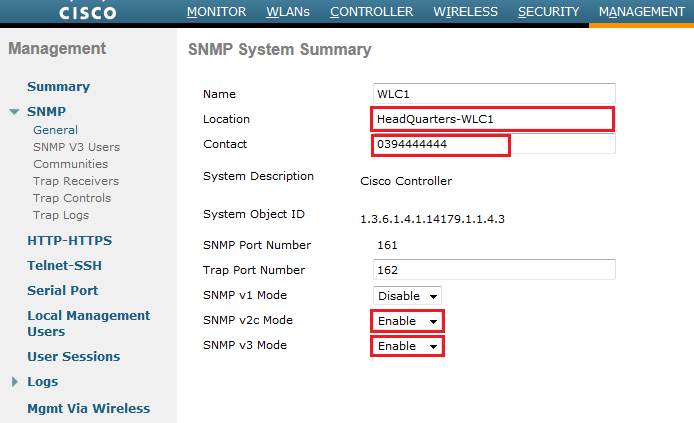
Here is a good walkthrough on setting up the Ubuntu Server:
#Configure snmp trap receiver ubuntu windows#
Remember – SCOM 2012 filters out any SNMP traps and will not discover a Windows Computer as a SNMP device, therefore using a Windows Computer and trapgen is not suitable for testing. In this example, I will discover a Linux System running Ubuntu, because that is easy to generate SNMP traps. Next – in order to accept traps from any network device – that device MUST be discovered and use SNMP as an access mode. I’ll assign a single MS to this pool for the purposes of trap reception: I want to lock down which management server I will use to receive traps, and to lock this to a single management server for any troubleshooting. Next, I create a network monitoring resource pool in SCOM. Notice – the SNMP service is not even installed here: There were lots of incorrect postings about the trap service early on. The only thing we need to make sure is that the SNMP Trap service should be disabled. Thanks to Mihai for setting me straight again. I initially posted about configuring this because ALL of the blog resources pointed to the need for the SNMP service, but in my testing this is totally not required. the SCOM SNMP trap listener uses a MonitoringHost.exe process and does not interact with the Windows SNMP stack. There are LOTS of blogs out there saying the SNMP service is required, and quite frankly – it isn’t…. In fact – if the SNMP TRAP service is running (it does not by default) then only thing I need to do is make sure it is disabled!
#Configure snmp trap receiver ubuntu install#
Lets just jump in.įirst clarification (and update to this blog post) – There is NO NEED to install or configure the SNMP service on the management server. In order for SCOM 2012 to accept traps from network devices, there is a laundry list of configuration prerequisites. I’ll reference some of them at the bottom, but this will be mine to document what worked, what didn’t, and some MP authoring examples that don’t exist anywhere else on the web. 1.3.6.1.6.3.1.1.5.4 s "enp2s0"Īlso the zabbix server log should contain this trap: cat /var/log/zabbix/zabbix_proxy.logĪppendix: Check SELinux errors: grep denied /var/log/audit/audit.There are several really good blogs out there which document some of the struggles and workarounds with getting SNMP TRAP monitoring to work. Send a test trap: ls -l /tmp # note down the /tmp/zabbix_traps.tmp do not exist This will output something like: zabbix 20169 0.0 0.4 97576 4196 ? S 15:15 0:00 /usr/local/sbin/zabbix_proxy: snmp trapper Ĭlear logs and restart services: > /var/log/zabbix/zabbix_proxy.logĬheck if services are up and running: systemctl status Ĭkeck if proxy trapper process is started: grep "snmp trapper" /var/log/zabbix/zabbix_proxy.log Restart Zabbix Server: systemctl restart zabbix-proxyĬheck if there is any listener: ps -aux | grep nmp

Sed -i "s|^.*StartSNMPTrapper=.*$|StartSNMPTrapper=1|" $conf

Restart SNMP trap daemon: systemctl restart snmptrapdĮnable Zabbix Trapper in "zabbix_nf": conf=$(find / -name "zabbix_nf" | grep "/etc/") Sed -i "s|^DBName=zabbix_proxy|DBName=\/tmp\/|" /etc/zabbix/zabbix_nf Sed -i "s|^Hostname=Zabbix proxy|Hostname=CentOS7ProxY|" /etc/zabbix/zabbix_nf Test if server is accessible: nmap -p 10051 .com Whitelist all allowed community names: cat /etc/snmp/nf Set the file executable: chmod +x zabbix_trap_Ĭheck if the temp directory is correct: grep "zabbix_traps.tmp" /usr/bin/zabbix_trap_


 0 kommentar(er)
0 kommentar(er)
